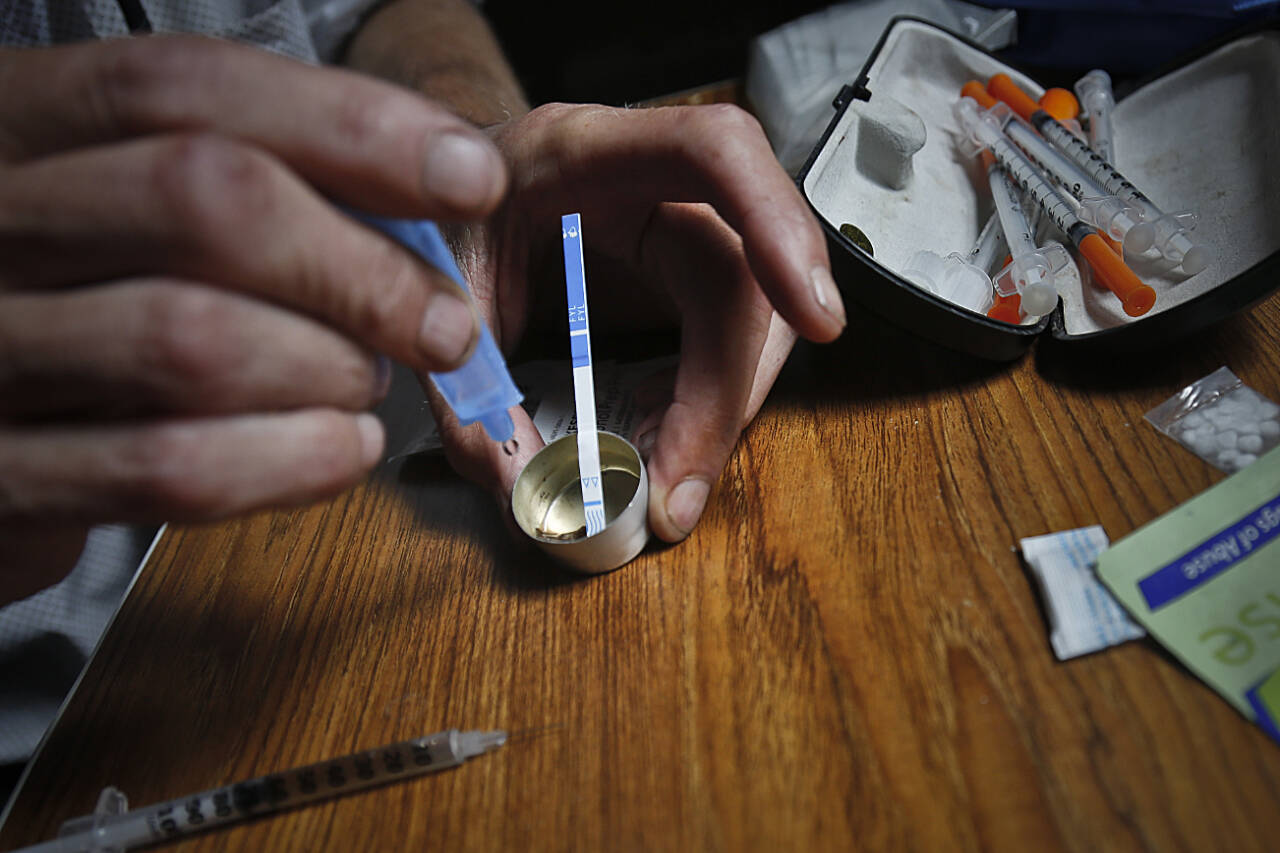By The Herald Editorial Board
Those in Snohomish County and throughout the state working to curb the epidemic rise in fatal drug overdoses — in particular the alarming increase in deaths from the synthetic and potent opioid fentanyl — may have a new harm-reduction tool more readily available soon.
Where Narcan is now more easily at hand to help reverse an overdose in progress, this new tool may help those using opioids and other drugs to avoid unknowingly using fentanyl — which is often mixed with heroin, methamphetamine, cocaine or other drugs — perhaps preventing a deadly overdose.
The new tool? Fentanyl test strips. The problem? The test strips are technically illegal, considered drug paraphernalia by state law.
The test strips, which can show the presence of fentanyl in a small sample of a drug prior to use, are available, some through support agencies such as Public Health — Seattle, King County. But wider availability and use of the strips has been discouraged by their inclusion on the drug paraphernalia list.
State Sen. Ron Muzzall, R-Oak Harbor, last year proposed legislation to remove that label from fentanyl test strips, but the bill, while it passed on the Senate floor, didn’t get a vote on the House floor, an apparent victim of time constraints during that session’s 60-day calendar.
“To have this on the paraphernalia list seems silly to me,” Muzzall said during a Feb. 6 hearing before the Senate Law and Justice Committee, “but I’m just a practical person. And not everything makes sense.”
The legislation appears to make sense to lawmakers this year, however. Muzzall’s second try at the bill, Senate Bill 5022, unanimously passed the Senate floor last week and is now before the House’s Community Safety, Justice and Reentry Committee. At the same time, a House version of the proposal, House Bill 1006, was also unanimously adopted by its chamber last week and is now before the Senate justice committee. Both bills, while focused more specifically on fentanyl test strips, would more broadly remove the paraphernalia tag from any product used to test the purity of any drug.
“This isn’t the answer to all of our drug problems. This is just one small step toward addressing what we have as a pandemic of drug overdose deaths,” Muzzall said. “Fentanyl is entirely different than many of the other drugs that we’ve seen before us, in the respect that it is so potent.”
Fentanyl is potent. The U.S. Drug Enforcement Agency says fentanyl can be up to 100 times more potent than morphine. Just 2 milligrams of the drug is considered a potentially lethal dose. A kilogram of the relatively inexpensive drug has the potential to kill a half-million people.
Overdose deaths in the county, from all drugs, have been on the increase in recent years, rising from 303 in 2020 to 354 in 2022, according to the Snohomish County Medical Examiner’s drug overdose dashboard. Through the last three years, fentanyl has accounted for the largest portion of those fatal overdoses, about 38 percent to 40 percent of all overdose deaths, and nearly all of those were accidental overdoses.
Of King County’s more than 1,000 overdose deaths last year, nearly 70 percent of those who died had fentanyl in their system, said Brad Finegood, a strategic adviser for Public Health — Seattle, King County, during the Senate hearing.
Key to reducing the accidental deaths of those who unknowingly use fentanyl will be distribution of the test strips and education and encouragement of their use. Programs in King County distribute the strips through vending machines. Similar programs in Snohomish County and elsewhere are now needed to make the strips more accessible.
The strips, easily carried and relatively simple to use, cost about a dollar each and are at least 96 percent accurate in detecting the presence of fentanyl or fentanyl-like drugs, according to an information sheet from the Legislative Analysis and Public Policy Association.
The test is quick; a small amount — about 10 milligrams of the drug to be tested — is mixed with a half-teaspoon to a tablespoon of water. The strip is placed in the solution for about 15 seconds, then removed and placed on a flat surface for two to five minutes. A single pink to red line on the test strip indicates the drug is positive for the presence of fentanyl. Two pink lines indicates a negative result.
A 2018 study by the Johns Hopkins Bloomberg School of Public Health and Rhode Island Hospital conducted interviews with 335 people who use drugs in Baltimore, Boston and Providence, R.I. Of those, 256 said they believed that they had unknowingly consumed fentanyl at least once and 85 percent of those said they wished they had known fentanyl was in the substance they used; and 70 percent said that knowing their drugs contained fentanyl would lead them to modify their behavior.
Currently, the state Health Care Authority and the state Department of Health are using a five-year $4.25 million federal grant to distribute naloxone, also known as Narcan, to the public. The state health department also offers mail order of free naloxone nasal spray kits.
The same effort should now be extended to increase the availability of fentanyl test strips.
Muzzall is correct that legalization and better distribution of the test strips isn’t the answer in itself.
But collective efforts at harm reduction — including needle exchange programs, distribution of naloxone and the availability of drug testing — can limit overdoses and deaths while broader efforts are continued to address the larger problem of substance use disorder that is needlessly disrupting lives and killing hundreds in the state.
Talk to us
> Give us your news tips.
> Send us a letter to the editor.
> More Herald contact information.

























